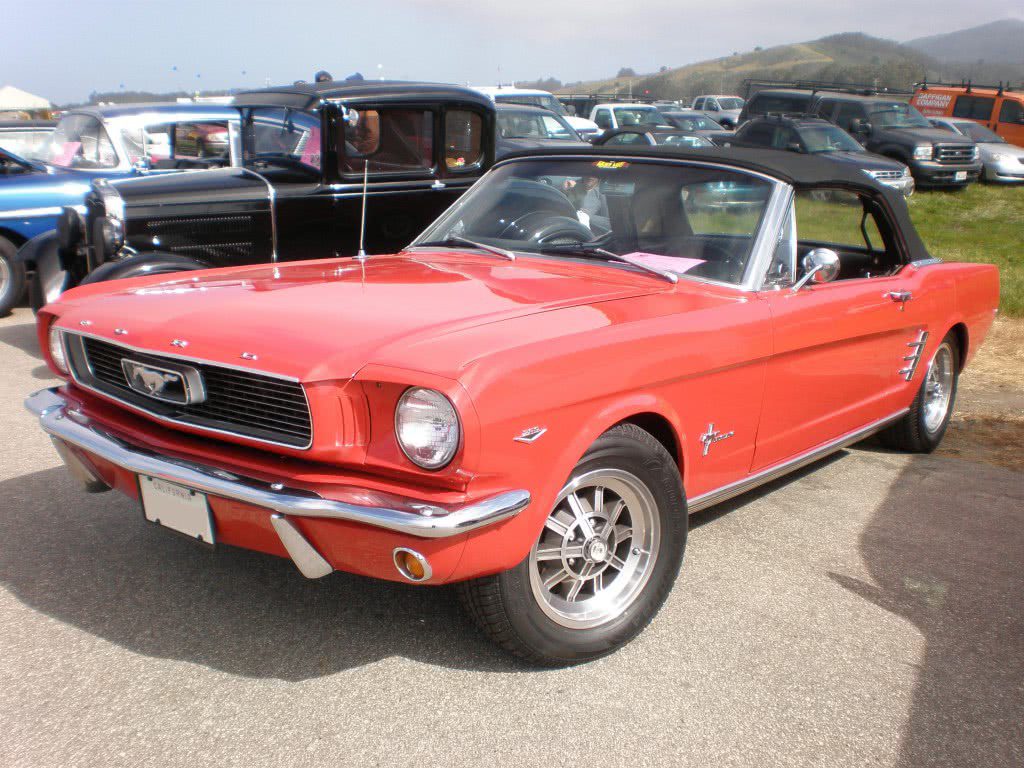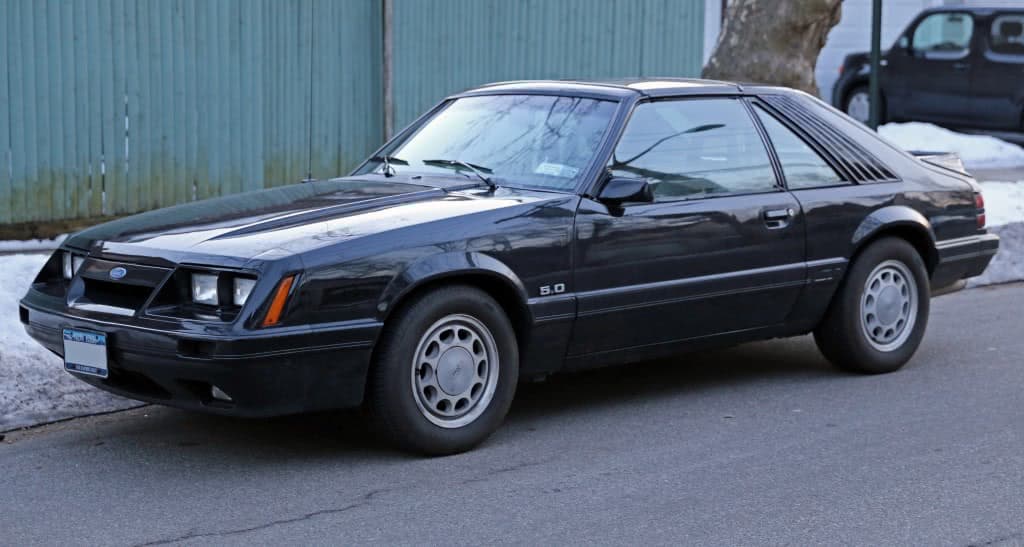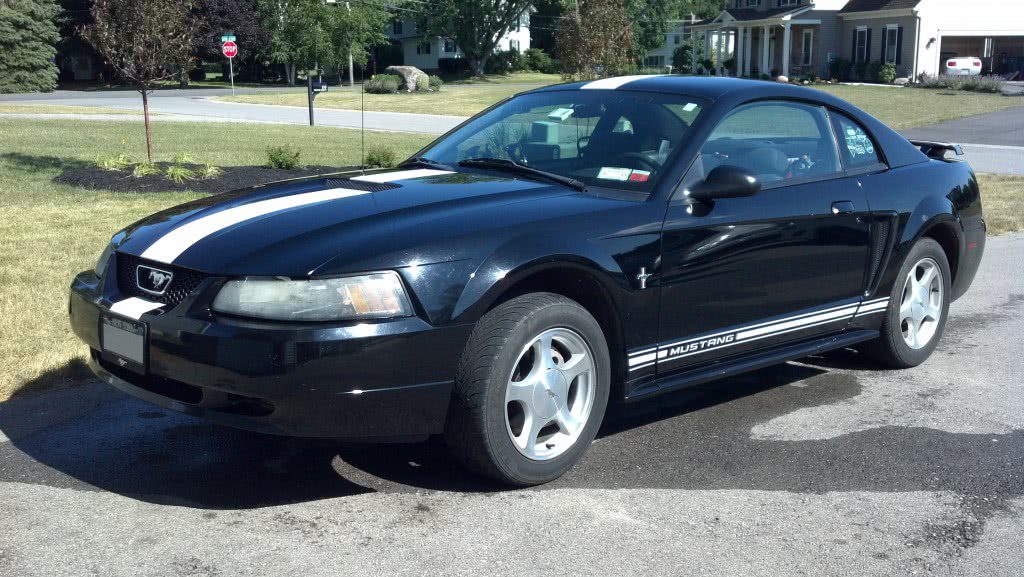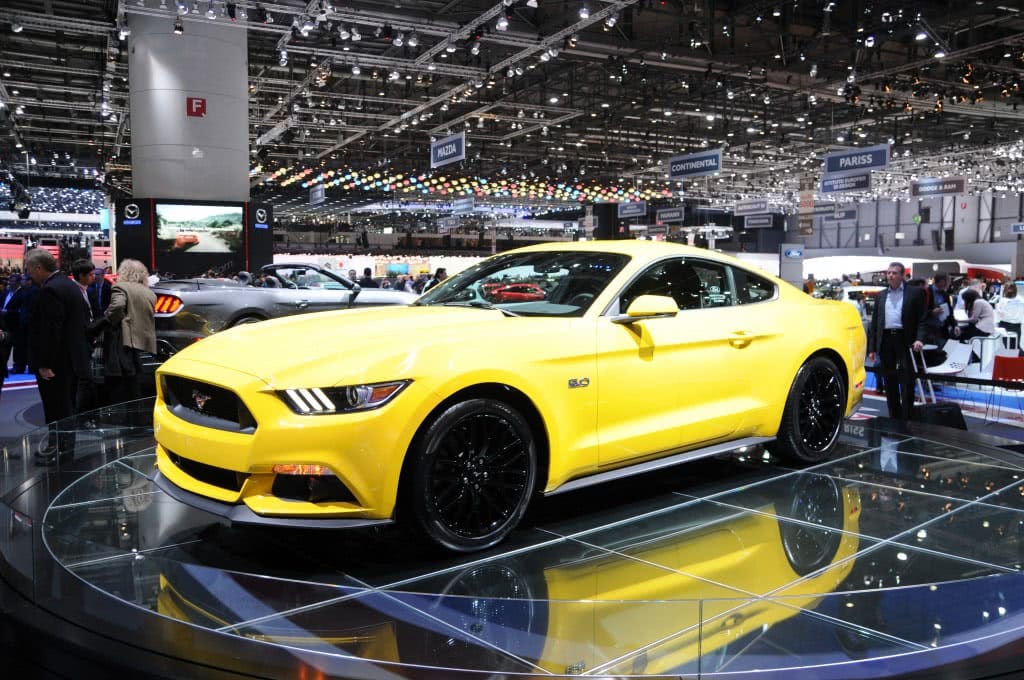Fifty Years of ‘Stang: The Evolution of America’s Most Popular Sports Car
There’s only one vehicle that can claim to be the face of American muscle for almost half a century: the Ford Mustang.
Multiple generations under its belt and a reputation that nearly exceeds its capabilities, the Mustang name is synonymous with performance, speed, and a special kind of swagger.
So with Ford celebrating Mustang’s 50th anniversary next year, we decided to take you back to the beginning and give you a rundown of how Mustang got to where it’s at today.
The Beginning


Originally intended as a two-seater, the “T-5 Project” roadster that led to the first generation Mustang was built in 1962. Two and a half years later, the final product–the 1965 four-seater Mustang–was released with a suggested retail price of just over $2,300 (before you let your jaw drop too far, remember it was 1965). Driven by a powerful marketing campaign–including articles released in over 2,600 newspapers the morning of the car’s initial reveal as well as public appearances in popular films such as the James Bond classic Goldfinger–the newborn Mustang would go on to shatter sales’ expectations, selling over a million units in its first year and a half on the market. However, later productions in this first generation–including varying performance models like the Mach 1, Boss 302, and Boss 429–would be designed with a larger body, sacrificing speed for luxury in a move that many Ford engineers would call ill-advised. Sales dropped off by 1971, threatening the longevity of Ford’s most promising new project.
Re-Tool


In 1970, Lee Iacocca–Ford’s General Manager during the original Mustang’s planning stage and its initial production run–was made President of the company and immediately commissioned the production of a smaller, faster, more efficient Mustang. The result was 1974’s Mustang II, a car that returned to the size of the original Mustang I, albeit with a heavier body due to parts added for the purpose of meeting emissions’ requirements. The car would go on to sell nearly 400,000 units that year, below the first-year sales record set by the Mustang I but still a respectable return, especially considering the updated model would go on to win its first Motor Trend Car of the Year award.
The Most Popular Sports Car in America


The third generation of Mustang would prove to be the longest running variation of the model, spanning 15 years–including all of the 80’s–with some distinction between the pre- and post-1987 designs. One of the major changes during this generation was the 1987 removal of the front grille, which had been a prominent feature of the first two versions of Mustang. Built using Ford’s Fox platform–a shared rear-wheel drive design unique to Ford vehicles–this generation of Mustang was constructed to be even more efficient, especially on gas in light of the second oil crisis of 1979.
Cruising into the 21st Century


In 1993, Ford spent $700 million dollars on development and eventually introduced the updated “Fox-4” platform. With it came both a new generation of Mustang as well as Ford’s further expansion into international markets such as Australia. This generation also saw the reintroduction of the Mustang GT, which would eventually be named the 1994 Motor Trend Car of the Year, Ford’s 11th time winning it since the award’s inception in 1949 and Mustang’s second win. This generation would also be characterized by two distinct styles set between pre- and post-1999, including a revamped reintroduction of the Cobra SVT model. With a curvier body and higher-performing engine, Mustang proved its commitment to entering the new millennium in style.
Style Points


The fifth generation of Mustang began production in 2004 for a 2005 rollout. With a pony-car-style that emphasized a sporty, performance-focused appearance, the new Mustang reintroduced the wide front grille in a throwback tribute to the 1960’s models, a change designers dubbed “retro-futurism”. Also included in the various package options was the 2008/2009 Bullitt, a variation of the GT which had ceased production in 2001. 2007 also saw the launch of the SVT Cobra’s spiritual successor: the Shelby GT500.
The Future of Speed


On the verge of celebrating 50 years of production, it’s only appropriate that Ford introduce the sixth and newest generation of Mustang in 2015. Following international expansion trends, the new Mustang will be the first one sold globally, with Ford announcing the first right-hand drive Mustangs ever produced. With a sleek body and updated engine, the new Mustang is sure to keep Ford’s golden child running smoothly for years to come.









